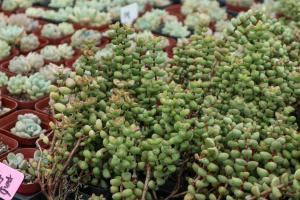How to Fill Pots for Artificial Plants
Artificial plants are a great way to add beautiful greenery and foliage to any space - without having to worry about watering, sunlight, or other environmental variables. That being said, in order to make sure your artificial plants look just as beautiful and realistic as the real thing, it's important to choose the right potting material.
Choosing the Right Material
When it comes to filling pots for artificial plants, there are two main options to consider: sand and gravel. Both of these materials are great for providing weight and stability to the plant, which helps to prevent tipping, spilling, or other unwanted movements.
Sand is a great option for small pots, as it is fine-grained and easy to work with. It also comes in a variety of colors, so you can choose a shade that complements your plant or your room decor.
Gravel, on the other hand, is a bit larger and more coarse than sand, making it ideal for larger pots or pots with heavier plants. It is also available in a range of colors, so you can pick one that matches the plant or the surrounding decor.
The Process of Filling Pots
Once you have chosen your filling material, it's time to get to work. Here's a step-by-step guide to help you fill your pots with ease and precision:
Start by preparing your pot. Make sure it is clean and free of any debris or dirt.
Add a layer of sand or gravel to the bottom of the pot. This will provide a solid foundation for the plant to sit on.
Place your artificial plant into the pot. Be sure to position it in the center, so it doesn't tip or lean to one side.
After placing the plant, fill the remaining space with your chosen filling material. Use your hands or a small scoop to make sure it is evenly distributed and packed in tightly.
Once you have filled the pot, gently shake it to make sure the filling material has settled and there are no gaps or air pockets in the pot.
That's it! With these simple steps, you can create a beautiful, stable home for your artificial plant that will look great for years to come. Just remember to dust the plant and pot periodically to keep everything looking fresh and clean.
Conclusion
Filling pots for artificial plants doesn't have to be a difficult or time-consuming task - as long as you have the right materials and follow the proper steps. By using sand or gravel to add weight and stability to your pot, and by filling it carefully and evenly, you can create a beautiful and realistic home for your artificial plant that will enhance any space.

 how many times do yo...
how many times do yo... how many planted tre...
how many planted tre... how many pine trees ...
how many pine trees ... how many pecan trees...
how many pecan trees... how many plants comp...
how many plants comp... how many plants can ...
how many plants can ... how many plants and ...
how many plants and ... how many pepper plan...
how many pepper plan...































